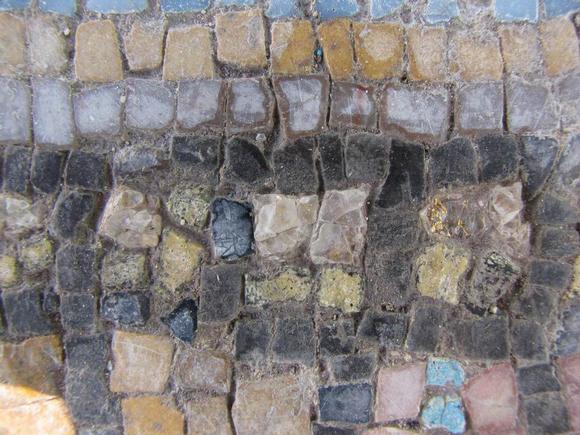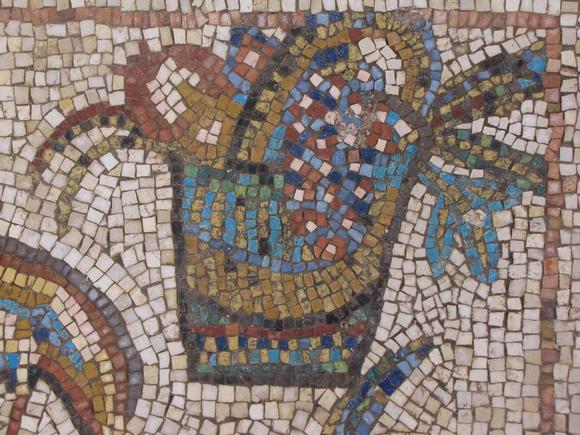2. The panel with vine leaves and birds

2.1. Mosaic’s stratigraphy:
Tesselatum – natural colored limestone tesserae, colored glass tesserae and gilded glass tesserae.
Lime bed – white colored fine lime mortar. The mortar composition will be defined in the future.
Nucleus - white colored lime mortar layer, 2 cm in depth. The mortar composition will be defined in the future. We found the impression of a hand (the four fingers of the left hand) in the nucleus layer during the cleaning the mortar from the backing of the mosaic.
Rudus – gray colored lime mortar layer, 5 cm in depth. The mortar composition will be defined in the future.
Statumen – First (upper) layer of very carefully arranged and leveraged stones (broken limestone blocks-10x7x4cm); second layer of very carefully arranged and leveraged white river stones (7-12cm) and well compacted soil. The soil characteristics will be investigated later.
 Panel with vine leaves and birds: Golden glass tesserae and colored glass tesserae
Panel with vine leaves and birds: Golden glass tesserae and colored glass tesserae 2.2. Execution techniques:
This part of the mosaic was "inserted" in the composition later after the execution of the two main floors. The cut in the pavement is visible and is well documented. The reason for this complicated operation remains unknown. The layout of the tesserae and the use of gold glass tesserae are marked differences with the two other parts of the mosaic. On the nucleus layer the main lines of the composition were designed with sharp tool and the incision is very visible. We suppose a third master worked here.
 Panel with vine leaves and birds: Colored glass tesserae
Panel with vine leaves and birds: Colored glass tesserae Conservation: 1 | 2 | 3 | 4 | 5 | 6 | 7 | 8 | 9 | 10 | 11 | Next page




